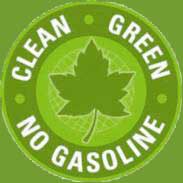The Ethanol Subsidy Dilemma |
Ethanol has been touted as a renewable, alternative fuel of the future for many years, and the hype continues to grow today. Green-energy environmental groups like the Natural Resources Defense Council, neo conservatives, and farm groups like the American Coalition for Ethanol are all touting E85 as a viable solution to the depletion of fossil fuels.
The claim is that making E85 will help America achieve a reachable, yet seemingly elusive goal of energy independence. Reducing oil imports, stimulating the American economy and reducing toxic emissions are worthy goals, but the ethanol promoters seem to be ignoring some unpleasant facts. Ethanol may not significantly reduce our oil imports; adding more ethanol to our gas tanks adds further complexity to our motor-fuel supply chain, which can lead to higher prices at the pump and most importantly, it has been determined that more energy is required to produce a gallon of ethanol than it actually provides.
There is a major, outstanding question regarding biofuels in general: Does making alcohol from grain or plant waste really create any new energy?
The answer, of course, depends upon whom you ask. The ethanol lobby claims there's a 30 percent net gain in BTU's from ethanol made from corn. Other boosters claim that there are huge energy gains (as much as 700 percent) to be had by making ethanol from grass. Ethanol critics have shown that industry calculations promoting the use of ethanol are bogus. A recent report on ethanol production estimates that making ethanol from corn requires 29 percent more fossil energy than the ethanol fuel itself actually contains.
 |
The report calculated all the fuel inputs for ethanol production — from the diesel fuel for the tractor planting the corn, to the fertilizer, to the energy needed at the processing plant; the findings determined that ethanol is a net energy-loser. According to the report, ethanol contains about 76,000 BTU's per gallon, and producing ethanol from corn requires about 98,000 BTU's. For comparison, a gallon of gasoline contains about 116,000 BTU's per gallon and making that gallon of gas, from drilling the well, to transportation, through refining, requires around 22,000 BTU's.
In addition to the findings regarding corn, the report determined that making ethanol from switch grass requires 50 percent more fossil energy than the ethanol yields, wood biomass 57 percent more, and sunflowers 118 percent more. The best yield comes from soybeans, but they, too, are a net loser, requiring 27 percent more fossil energy than the biodiesel fuel produced. In other words, more ethanol production will increase America's total energy consumption, rather than decrease it.
Ethanol poses other serious difficulties for our energy economy. First, even 8 billion gallons of ethanol will do almost nothing to reduce oil imports; America burned more than 134 billion gallons of gasoline last year. By 2012, those 8 billion gallons might reduce America's overall oil consumption by 0.5 percent. In 1997, the General Accounting Office concluded that "ethanol's potential for substituting for petroleum is so small that it is unlikely to significantly affect overall energy security." Adding more ethanol will also increase the complexity of America's refining infrastructure, which is already straining to meet demand, and raising pump prices. E85 is ethanol blended with 15% gasoline which is what will be sold at the corner fuel station. Another issue is that ethanol absorbs water and therefore, cannot be shipped by regular petroleum pipelines. Ethanol has to be segregated from other motor fuels and shipped by truck, rail car, or barge, shipping methods which are far more expensive than pipelines.
There's another problem: Ethanol, when mixed with gasoline, results in a higher evaporation rate. This forces refiners to dramatically alter their gasoline formula to compensate for the increased evaporation. In a report released in 2005, the Government Accountability Office (GAO) underscored the evaporative problems posed by ethanol, saying that compensating for ethanol forces refiners to remove certain liquids from their gasoline: "Removing these components and reprocessing them or diverting them to other products increases the cost of making ethanol-blended gasoline."
What frustrates critics is that there are sensible ways to reduce our motor-fuel use and bolster renewable energy, they just don't help the corn lobby. If we channeled the billions spent on ethanol into fuel-efficient cars and solar cells, we would have so much more bang for the buck that it's a no-brainer.
|







